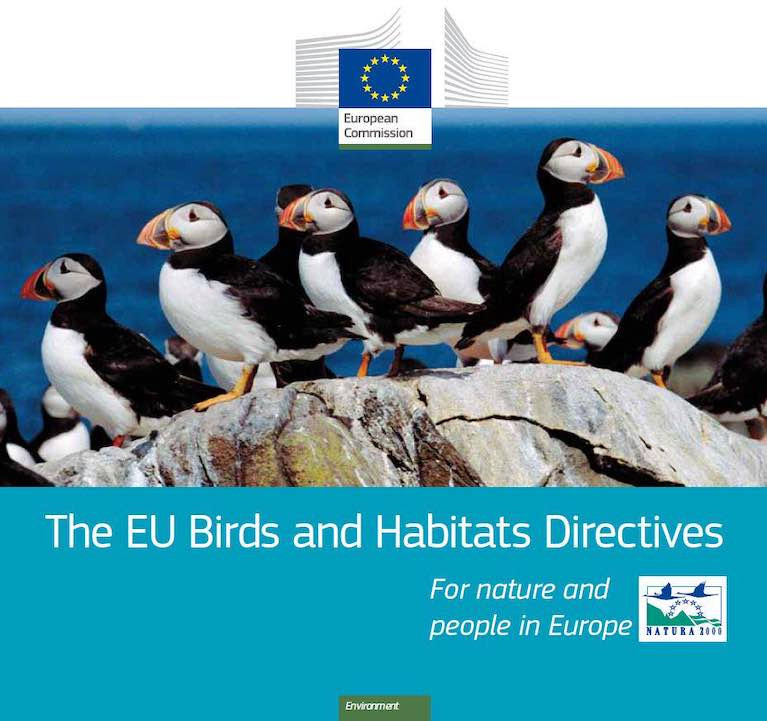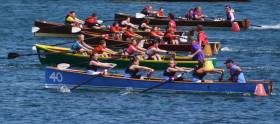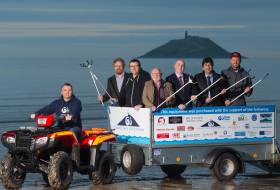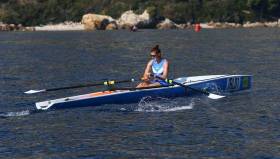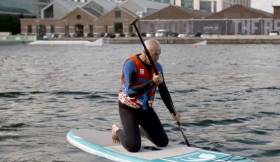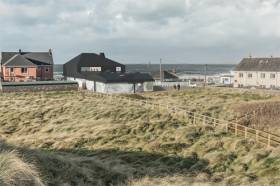Displaying items by tag: Coastal
Coastal Machair Habitats to Benefit from EU Funding
Conservation of Ireland’s coastal machair habitats will benefit from some €7.4 million in funding, Minister of State for Heritage Malcolm Noonan has said.
Some €5.7 million of the total sum of €7.4 million will be drawn from the new EU LIFE project, Mr Noonan said.
The project will work with Donegal, Mayo and Galway farmers to improve ecological conditions for breeding waders and pollinators, he said.
The LIFE programme is the EU’s funding instrument for the environment and climate action.
The “LIFE On Machair” project aims to work with farmers and landowners to improve the conservation condition of Ireland’s machair habitats and the ecological conditions for breeding waders and pollinators within project sites, Noonan explained.
He said an integrated approach will provide “education, guidance, and informed management policies for stakeholders, and deliver concrete conservation actions within a network of machair and wader Natura 2000 sites”.
The project extends over a total machair system area of about 3,500 hectares, he said.
Machair is defined as a coastal habitat characterised by lime-rich, wind-blown sand plains unique to the north and west of Ireland and Scotland.
“The typical flower-rich vegetation of machair is traditionally maintained through low-intensity livestock grazing, but is susceptible to pressures from recreational activities and overgrazing,” Noonan’s department said.
“Machair ecosystems provide an important refuge for pollinators and threatened breeding wader bird species, such as dunlin, lapwing and redshank,” it said.
“Post-Brexit, the entire EU land cover of the habitat occurs in Ireland, meaning the conservation of machair in Ireland is of significance on a European scale,” the department pointed out.
The LIFE on Machair project will focus on nine special areas of conservation and four special protection areas in counties Donegal, Mayo and Galway.
A voluntary results-based payment scheme will be linked to the quality of the habitat, placing the landowner’s skills, expertise and knowledge central to the development of this project, the department said.
“The award of this funding is a very positive development in addressing the urgent need for conservation and restoration of biodiversity in our coastal areas,” Noonan said.
“I am hopeful that this project will help conserve Ireland’s unique machair systems whilst also supporting coastal rural communities, providing employment opportunities and an important financial injection,” he said.
Greystones J122 'Kaya' Will be New Test for ISORA JPK 10.80 Champion 'Rockabill VI' in Saturday's Training Run
ISORA has a potent cruiser-racer fleet of 14 entries and possibly more for Saturday's first training event of the 2021 season from Dublin Bay.
In an exciting development for Irish offshore crews, the ISORA fleet will be joined for the first time by Frank Whelan's new Greystones Sailing Club J-boat, Kaya.
It's a sister ship of the top performing Royal St. George J/122 Aurelia skippered by Chris Power Smith that is also slated for training on Saturday.
The J/122 design is a 40-foot sloop conceived as a versatile, stable and simple-to-sail modern cruiser and racer.
Training as part of the Viking Marine Coastal Series will see a Dun Laoghaire to Dun Laoghaire Coastal route of 35 miles, representing the first training for next month's 320-mile Dun Laoghaire to Dingle Race from the National Yacht Club on June 9th.
 JPK 10.80 Rockabill VI
JPK 10.80 Rockabill VI
The new Wicklow J122 will meet defending Royal Irish ISORA champion, the JPK 10.80 of Rockabill VI (Paul O'Higgins) for the first time along with Andrew Algeo's J99, George Sisk's XP44 WOW and two Howth Yacht Club J109s Outrajeous of ICRA Commodore Richard Colwell and Simon Knowles' Indian.
 J122 Kaya is prepared for Saturday's ISORA debut at Greystones Harbour
J122 Kaya is prepared for Saturday's ISORA debut at Greystones Harbour
See the entry list to date below.
ISORA Chief Peter Ryan told Afloat that he expects the Dun Laoghaire Harbour start could reach 20 boats but admits 'everything is running very late' as a result of the COVID delayed start to the 2021 sailing season.
 J/99 Juggerknot II
J/99 Juggerknot II
The final training course will be made at midday on Friday and, as Afloat previously reported, Figaro offshore campaigner Kenny Rumball is providing a tactical Zoom briefing on the course tomorrow evening. More here.
 Provisional Dublin Bay ISORA fleet - race training begins on Dublin Bay on Saturday, May 15th
Provisional Dublin Bay ISORA fleet - race training begins on Dublin Bay on Saturday, May 15th
European space satellite imagery could replace human monitoring as an effective “health check” of Ireland’s coastal environment, according to new research by NUI Galway scientists.
As The Times Ireland edition reports, earth observation data sets recorded by European Space Agency (ESA) satellites can monitor the spread of algal blooms and other key information which is normally collected in field surveys.
A study of satellite imagery for eight Irish estuaries led by NUI Galway (NUIG) scientist Dr Liam Morrison with researcher Sita Karki showed this type of monitoring could be very cost-effective.
Estuarine and coastal waters worldwide have been facing increasing challenges from generalised use of industrial fertilisers since the second world war, the researchers note.
Macroalgal blooms are regarded as a “clear sign” of nutrient over-enrichment which estuaries are particularly susceptible to - reducing both fish species and water quality.
An Environmental Protection Agency (EPA) report of 2019 found that transitional waters - as in estuaries and coastal lagoons - in Ireland have poorer water quality than groundwater systems, rivers, lakes, and coastal waters.
The research team analysed imagery for the eight Irish estuaries captured by the Sentinel-2A/B, Landsat-5, and Landsat-8 satellite missions.
The locations ranged from Rogerstown, Malahide and the Tolka on Dublin’s north side to Bannow Bay, Dungarvan and the lower Blackwater in the south-east to Courtmacsherry and Clonakilty in Co Cork.
The study was a collaboration between NUIG and the Irish Centre for High End Computing, and was funded by the EPA.
It is published in the current issue of Frontiers in Marine Science.
Read more in The Times Ireland edition here
Government Intends to Publish Expansion of Marine Protected Areas Report Later This Year
Public consultation on a new report on expanding Ireland’s marine protected areas will begin “later this year”, according to Minister for Housing, Local Government and Heritage Darragh O’Brien.
A report exploring the need to expand Ireland’s marine protected areas (MPAs) to meet a target of ten per cent of the State’s entire maritime area has been given to Mr O’Brien and his junior minister Malcolm Noonan.
Ireland is aiming for 30% of its maritime area to be designated MPAs by 2030, and the report by an expert group examines the benefits and costs of doing so, and how Ireland should go about doing it.
The report has not yet been published, but Mr O’Brien said that a significant finding is that many threatened and important marine habitats, species and ecosystems that aren’t covered by the EU Birds and Habitats Directives cannot be afforded the protection necessary to meet Ireland’s international commitments and legal obligations under current legislation.
It also identifies the possibility to “greatly improve the level of stakeholder engagement and participation in the site selection and management process”, Mr O’Brien’s department said.
The advisory group on MPAs has been chaired by Prof Tasman Crowe of the UCD Earth Institute, working with 20 experts in life and ocean sciences, marine socio-economics, maritime culture, governance and legislation.
The advisory group was tasked with “providing important technical advice and recommendations on the processes required and the challenges to be addressed in the future expansion of Ireland’s network of MPAs, based on the group’s own work and on the views of a wide range of stakeholders”.
MPAs are geographically defined maritime areas that provide levels of protection to achieve conservation objectives. They support economic activity associated with the sea by ensuring that activity is kept at a level that ensures the seas and oceans continue to support life and human health. They also help reduce the effects of climate change and ocean acidification.
“Never before have we, as a nation, faced the twin global crises of climate change and accelerating biodiversity loss on land and at sea,”Mr O’Brien said.
Collective Action
“ This comprehensive report represents a “Call for Collective Action” on behalf of our people and our natural marine environment, to ensure that we can sustain clean, healthy, diverse and productive oceans and seas around Ireland, both now and in the future. Minister Noonan and I sincerely thank Prof Crowe and his colleagues for providing this valuable and timely report today,” he said.
“Not only can MPAs provide us with answers to the challenges of climate change and biodiversity loss, but they also hold a key to our future - as a maritime nation that’s home to a bountiful and sustainable source of food, green energy and tourism activity for example. In this context, later this year we will be welcoming the views of the public and all stakeholders on this report and the process that lies before us,” Mr O’Brien said.
“This is our ongoing vision for Ireland’s marine environment - one that can not only sustain nature and people and support livelihoods, but also one that brings us together to solve some very real crises of our time,” Mr Noonan added.
MPAs can take a variety of forms ranging from exclusive marine reserves to areas allowing sustainable use or restricting specific activities, the two men said.
Special Protection Areas
Ireland's future network of MPAs may include the incorporation of existing Special Protection Areas (SPAs) and/or Special Areas of Conservation (SACs) under the Birds and Habitats Directives. It may also incorporate protection measures established under the EU Common Fisheries Policy (CFP) for example, and other area-based conservation and protection measures.
Mr O’Brien said he intends to publish the Marine Protected Area advisory group’s report for an extensive period of public consultation in late 2020 and early 2021.
Further details are available at here
New Coastal Rowing Championships to be Hosted by Rushbrooke
#Rowing: Rushbrooke Rowing Club from Cobh will host the Irish Coastal Rowing Championships next August. It is the first such coastal event to be held under the auspices of Rowing Ireland.
The decision to choose Rushbrooke was made at the inaugural annual delegate meeting of the new Rowing Ireland Coastal Rowing Division in Portlaoise.
Rushbrooke submitted a detailed proposal to hold the championships at the National Rowing Centre in Cork and were given unanimous support. Delegates opted for the weekend of August 18th and 19th for the event.
Ted McSweeney, the chairperson of Rushbrooke Rowing Club said: “This is the greatest honour to be bestowed upon our club. Our club has been in existence since the early 1900s, and although the original club ceased in the late 1960s when the original wooden clubhouse and boats were engulfed by a fire, in 1989, local residents decided to restart the club and agreed on using the Yawl class racing boat. Over the last 28 years, we have gone from strength to strength and have established ourselves as one of the top coastal rowing clubs in Cork.
“As a club, we are delighted at the opportunity to host the inaugural Irish Coastal Rowing Championship and will endeavour to deliver an event that will meet the superb standards that have been set over the past few years. Even at this early stage, we have received immense support, both from the Coastal Rowing community and local organisations. We would like especially to thank the management team at the National Rowing Centre in Farran Woods, who have been exceptionally helpful and forthcoming in assisting us with our bid. A new chapter in coastal rowing has begun and Rushbrooke Rowing Club will strive to maintain the high standard of regattas that we have been accustomed to. We look forward to welcoming all Coastal Rowers to Cork in 2018 and we can assure you of a Ceád Míle Fáilte.’
Kieran Kerr, chairperson of the Rowing Ireland Coastal Division, said: “On behalf of Rowing Ireland, I would like to congratulate Rushbrooke Rowing Club on a very professional bid. We look forward to an exciting inaugural Irish Coastal Rowing Championships.”
East Cork Community Protects Its Beaches
Ballynamona Strand on the East Cork coastline is internationally renowned for a long list of bird life including Shrikes, Larks, Citrine Wagtails, Sandpipers, Pipits, American Coot and Red-necked Stint. There is a new sight to be seen there, writes Tom MacSweeney and it is ensuring that the strand remains a welcoming place for wildlife, seabirds, marine life and for the general public. Regrettably, visitors of the human kind leave litter behind, disregarding the marine environment and despoiling the area.
The local community has responded leading to the new sight on the beach - a quad bike and trailer - showing community dedication to the preservation of a clean maritime environment. It’s the work of the group known as ‘Clean Coasts Ballynamona.’ “Truly an excellent example of what can be achieved when business and community work together,” said Proinsias Ó Tuama, one of the leaders of ‘Clean Coasts’ ‘and a teacher at St.Colman’s Community College, Midleton, where students are also involved in the protection of local beaches. Business and community interests raised €16,000 for a quad bike and trailer to remove beach litter. “It shows how local people are concerned for their maritime environment.”
The Ballynamona group has twice been An Taisce ‘Ocean Hero’ national award winners and has been using the equipment to maintain over 30kms. of coastline by removing marine litter from Ballybranagan to Ballymacoda in East Cork. Five tonnes of rubbish was taken from Ballybranagan beach with the help of the Transition Year students.
Rowing Ireland to Run Coastal Rowing Championships
#Rowing: There is to be a new Coastal Division of Rowing Ireland. At a meeting of the RI board on Saturday, October 21st, the board unanimously acceded to a request from 20 of its affiliated clubs that it form a coastal division. Rowing Ireland has traditionally offered river (Olympic) rowing, and since May of this year has also offered offshore rowing.
Hamish Adams, Rowing Ireland CEO, said: “Having seen how successfully offshore rowing has been integrated into Rowing Ireland we believe that adding coastal rowing is a very positive step to expand our product offering and will permit Rowing Ireland to recruit members and develop rowing where river rowing is not possible.”
Rowing Ireland will run an Irish Coastal Rowing Championship in 2018, the venue and date of which will be agreed by the clubs at a later date. Kieran Kerr, the chair of the new Coastal Rowing Committee, said that the new coastal division will be club driven and will endeavour to raise the standard of coastal rowing through the provision of coach education and all the other services which Rowing Ireland provides.
Lecture: The Road to Rio Paralympic Sailing
#Lecture - Glenua & Friends presents the lecture: The Road to Rio Paralympic Sailing
The talk by Dr. Austin O’Carroll takes place next Thursday 3 November at 20:00 in Poolbeg Yacht & Boat Club Ringsend, Dublin. Entry €5 (in aid of Safetynet)
In 2013 Austin was offered the chance of a place with John Twomey and Ian Costelloe on the Irish Sailing Sonar team which was seeking to qualify for the Rio Paralympics.
In his illustrated talk, Austin will focus on how they forged a team together, followed by a hectic qualifying campaign and finally their experiences of the Paralympic Finals. While involved in this campaign, there was a huge influx of people into homelessness. This meant the medical charity Safetynet, founded by Austin, had to rapidly expand the range of services for homeless people. He will describe how they dealt with this crisis, while running the Paralympic campaign.
Austin’s journey to Rio began in Bere Island in 1982 with a Glenans sailing course. Undaunted by the physical challenges, he was a dinghy instructor by 1984. He is now a GP in Inner City Dublin with a deep interest in Health Inequalities.
In recognition of his work with marginalized groups, he was presented with the Irish Healthcare Person of the year 2015 award and granted an honorary fellowship of the Royal College of Physicians of Ireland. He started eight specialized primary care services for homeless people and founded Safetynet, the umbrella organization for specialized-services for homeless people in Dublin and Cork.
Safetynet has been innovative in the delivery of healthcare to homeless people including rough sleepers; provision of substance misuse treatment to homeless people. He is also involved in a variety of educational programmes dealing in health inequality and disability.
Bobby Kerr’s Travels Along Home Shores Begin This Thursday
#OnTV - The first episode of Bobby Kerr-fronted UTV Ireland series Along Home Shores comes this Thursday 27 October at 7.30pm and explores Dublin’s waterways, with a visit to the famous wallabies of Lambay Island.
Afloat.ie reported last month on filming for the new eight-part-TV series, in which the Insomnia café entrepreneur and avid sailor will discover the hidden treasures of the coastlines and waterways of Ireland.
In each episode, Bobby will examine how people are using the natural resources of our waterways to create employment, while also showcasing the beauty of Ireland along the way. Over eight weeks, he will embrace the heart of maritime communities all over Ireland.
The first episode sees Bobby beginning his journey on his own doorstep of Dublin, where he goes for an early morning swim at the Forty Foot with members of the Sandycove Bathers Association.
At Grand Canal Dock, he meets a local leisure business and tries paddle boarding for the first time, and Bobby's fitness is put to the test when cancer support group, the Plurabelle Paddlers, bring him dragon boat training.
Eugene Garrihy, the owner of Dublin Bay Cruises, invites Bobby on board his boat to talk business, and he also gets an exclusive invite to the hidden gem of Lambay Island by businessman Michael Bermingham, who is the only supplier of Lambay meat in Ireland.
"I have been truly amazed by the scenic beauty of Ireland's coastline and inland waterways during my filming of Along Home Shores,” said Bobby of his experience making the series.
“The fascinating characters I met along the way were an absolute inspiration to me. Through the prisms of heritage, business and culture, I have now gained a unique insight into Ireland. The sheer magnificence of our coastal and inland waterways, and their people, cannot be overstated."
Beginning his voyage in the capital, Bobby will bring the personality of coastal towns, villages and inland waterways to life as he travels anticlockwise around Ireland before ending his journey back in Dublin.
Future weeks will see him visiting Rathlin Island's seabird colony, kayaking the Causeway Coast, angling on Lough Erne, sailing on Lough Derg, attending the homecoming of Skibbereen's Olympic heroes, cycling the Deise Greenway, going oyster farming, staying overnight in a lighthouse and lots more.
The first episode of Along Home Shores airs this Thursday 27 October at 7.30pm on UTV Ireland.
Bold Design For New Strandhill Surfing Centre
#Surfing - A black rubber roof is one of the unusual features of the winning design for a new maritime centre in Strandhill, as the Sligo Champion reports.
The vision for the new surfing and coastal community centre by London architects Manalo & White also includes large concrete panels around the perimeter with Celtic seascapes and surfing scenes by Barry Britton, whose known as much for his art as for his waveriding legacy – not least being father of women's surfing pioneer Easkey Britton.
A planning application is expected to be completed by the end of April with a view to having the €500,000 facility, which would replace the existing centre used by the local surf club and other groups, ready in time for next year's tourism season.
The Sligo Champion has more on the story HERE.


























